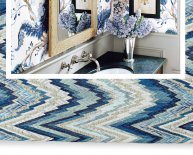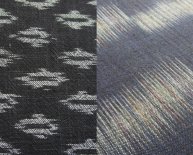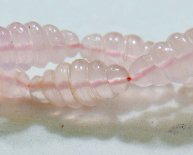
Man made regenerated fibres
Certain natural cellulose fibres are treated and re-produced for specific purposes. The famous fibres such as Viscose Rayon, Acetate etc. are produced by processing various natural polymers.
Manmade Cellulosic Fibers
The first man-made fibres which were developed and produced used polymers of natural origin, more precisely of cellulose which is a raw material available in large quantities in the vegetable world.
Cellulose is the natural polymer that makes up the living cells of all vegetation. It is the material at the center of the carbon cycle, and the most abundant and renewable biopolymer on the planet.
Cotton linters and wood pulp, viscose rayon, Cupra-ammonium, Cellulose Acetate (secondary and triacetate), Polynosic, High Wet Modulus (HWM).
- Cellulose is one of many polymers found in nature.
- Wood, paper, and cotton all contain cellulose. Cellulose is an excellent fiber.
- Cellulose is made of repeat units of the monomer glucose.
- The three types of regenerated cellulosic fibres are rayon, acetate and triacetate which are derived from the cell walls of short cotton fibres called linters.
- Paper for instance is almost pure cellulose
Rayon
Originally, the word rayon was applied to any cellulose-based manufac- tured fiber, and therefore included the cellulose acetate fibers. However, the defi- nition of rayon was clarified in 1951 and now includes textiles fibers and filaments composed of regenerated cellulose, excluding acetate. In Europe the fibers are now generally known asviscose, the termviscose rayon being used whenever confusion between the fiber and the cellulose xanthate solution (also called viscose—see below) is possible. (In this article the termsregenerated cellu-losics, rayon, and viscose rayontend to be used interchangeably.)
- Rayon is a manufactured regenerated cellulosic fiber.
- It is the first man made fibre .
- It has a serrated round shape with smooth surface.
- It loses 30-50% of its strength when it is wet.
- Rayon is produced from naturally occurring polymers and therefore it is not a synthetic fiber, but a manufactured regenerated cellulosic fiber.
- The fiber is sold as artificial silk
There are two principal varieties of rayon namely viscose and cupra ammonium rayon.
Acetate
A manufactured fiber in which the fiber forming substance is cellulose acetate.Acetate is derived from cellulose by reacting purified cellulose from wood pulp with acetic acid and acetic anhydride in the presence of sulfuric acid.
The Acetate Fiber Characteristics
- Luxurious feel and appearance
- Wide range of colors and lusters
- Excellent drapability and softness
- Relatively fast drying
- Shrink, moth and mildew resistant
- Special dyes have been developed for acetate since it does not accept dyes ordinarily used for cotton and rayon.
Acetate fibers are the manufactured fibers in which the fiber-forming substance is cellulose acetate. The cellulose esters triacetate and acetate are formed through acetylation of cotton linters or wood pulp using acetic anhydride and an acid catalyst in acetic acid.
Acetate and triacetate fibers are very similar in appearance to the regular-tenacity viscose rayons.Acetates and triacetates are moderately stiff fibers and possess good resil iency on bending and deformation, particularly after heat treatment.
















